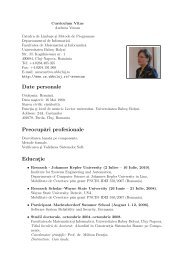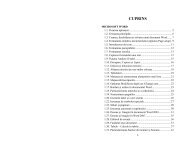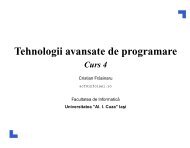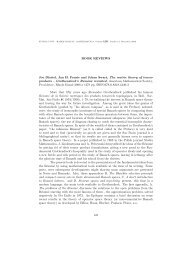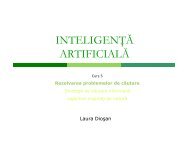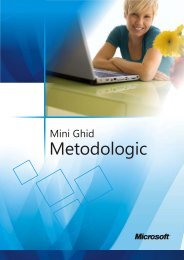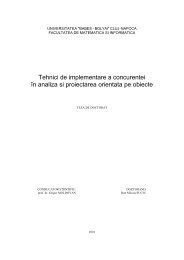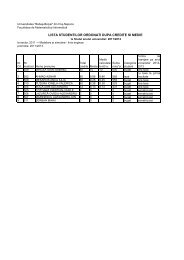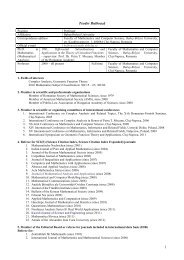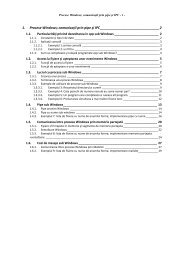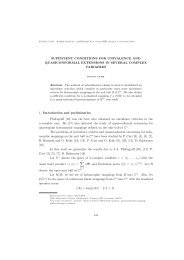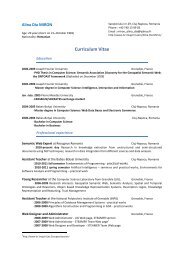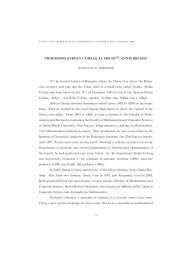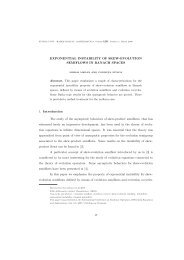CONTENTS
CONTENTS
CONTENTS
You also want an ePaper? Increase the reach of your titles
YUMPU automatically turns print PDFs into web optimized ePapers that Google loves.
252 CAMELIA CHIS ĂLIT¸ Ă–CRET¸ U(1) AND ANDREEA VESCAN (1)<br />
the evolution of the fitness function (best, worse and average) recorded for each run<br />
within 20 chromosomes populations and 10 generations.<br />
The evolution of fitness function (recorded for the best individual in each run)<br />
for 200 generations and 100 individuals is depicted in Figure 1(b).<br />
(a) Experiment with 10 generations and (b) Experiment with 200 generations and<br />
20 individuals with eleven mutated genes 100 individuals<br />
Figure 1. The evolution of fitness function (best, worse and average)<br />
and the best individual evolution<br />
While compared with the previous experiments we noted that we are getting a<br />
lower number of different solutions while cumulating the results obtained in all the<br />
100 runs, but the quality (and the number) of these solutions is improving much<br />
more. In a first experiment the greatest value of the fitness function is 0.3508 (with<br />
69 individuals with the fitness > 0.33) while in a second experiment this is not more<br />
than 0.3536 (55 individuals with the fitness > 0.33). But the best chromosome was<br />
found in the experiment with 200 generations and 20 individuals having the value<br />
0.3562.<br />
The best individual obtained allows to improve the structure of the class hierarchy.<br />
Therefore, a new class is added as base class for PrintServer and FileServer and<br />
the print method is renamed, its signature is changed and it is moved to the new<br />
Server class. The correct access to the class fields by encapsulating them within their<br />
classes is enabled.<br />
3.2. Results obtained by others. Fatiregun et al. [2] applied genetic algorithms<br />
to identify transformation sequences for a simple source code, with 5 transformation<br />
array, whilst we have applied 6 distinct refactorings to 23 entities. Seng et al. [6]<br />
apply a weighted multi-objective search, in which metrics are combined into a single<br />
objective function. An heterogeneous weighed approach is applied here, since the<br />
weight of software entities in the overall system and refactorings cost are studied.<br />
Mens et al. [5] propose the techniques to detect the implicit dependencies between<br />
refactorings. Their analysis helped to identify which refactorings are most suitable<br />
to LAN simulation case study. Our approach considers all relevant applying of the<br />
studied refactorings to all entities.<br />
4. Conclusions and Future work<br />
The paper defines the MOORSP by treating the cost constraint as an objective<br />
and combining it with the effect objective. The results of a proposed weighted objective<br />
genetic algorithm on a experimental didactic case study are presented and<br />
compared with other recommended solutions for the similar problems.



